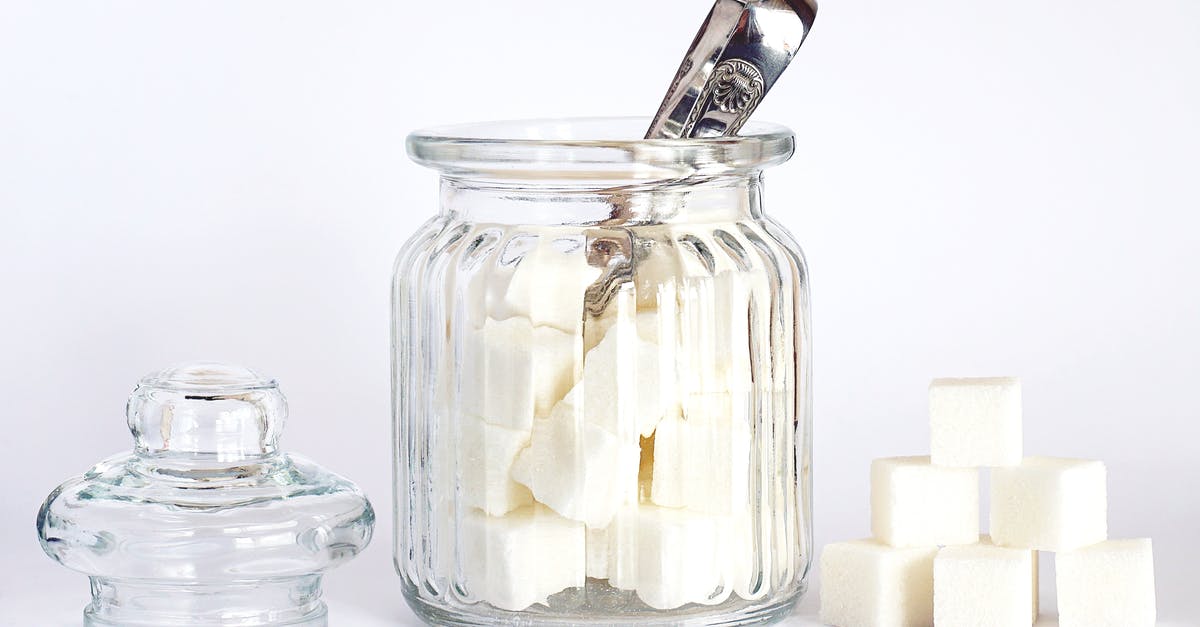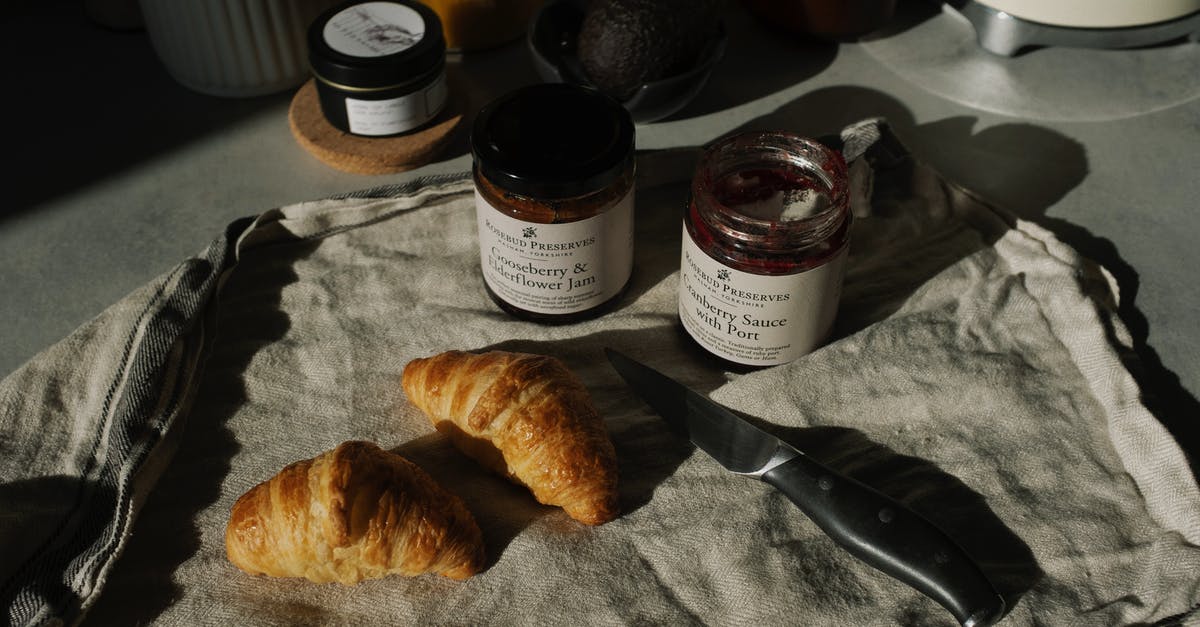How to seal a jar with a jam so that it can be opened without breaking the lid?

When I make a jam, I put it while it's hot into a jar, then close the jar with its lid (a single-piece, screw-on metal lid) and put in cold water. After doing this, I can usually keep the jam outside the refrigerator for months. But, when I try to open the jar, it is very difficult and in many cases I have to use a plyer to fold the lid open.
Is there a way to seal a jam for long-term preservation, such that it can also be opened easily?
EDIT: I just bought a jam at the supermarket. It is canned just like my jams - in a glass jar with a single-piece screw-on metal lid. It can remain on the shelf for months without refrigeration. Opening it is very easy - I just twist the lid slightly and it opens. I don't need to use force or any special tool or technique. The lid remains intact and can be used again. HOW DO THEY DO THIS?
Best Answer
You just need to work out your forearms more. :)
If food gets on the rim of the jar it can greatly add to the friction after the lid is on. It actually makes the whole process unreliable- the food might prevent a seal from forming or it might harden and make the lid difficult to remove- either way make sure the rim of the jar is clean.
Canning jars create a vacuum when the heated air in the jar contracts. This vacuum is what holds the lid on tightly. You can alter the strength of the vacuum in two ways:
1- leave more air at the top of the jar (called headspace).
More air means that a smaller percentage of the air will be forced out and the seal will be weaker. Be careful that you don't make it too weak. If the seal fails the food will spoil.
Jam recipes meant for normal canning jars will include the recommended headspace. You should start there with your experiments.
2- Let the jam cool a little before applying the lid.
This will also result in less air being forced out and a weaker seal. This is something you can experiment with but it would be more finicky than #1. If you do try it, watch your jars closely for a while and put them in the fridge if the seal fails.
The canning process for jam in normal canning jars usually includes boiling the jars afterwards to ensure the jars seal properly. With those lids, sealing too strongly isn't a concern as the lids are disposable. Even with your jars, you want a very strong seal. If you are having trouble opening them perhaps you should try using a tool that will give you leverage but not damage the lid.
Pictures about "How to seal a jar with a jam so that it can be opened without breaking the lid?"



Quick Answer about "How to seal a jar with a jam so that it can be opened without breaking the lid?"
Add some grip Items that can be used for greater grip include a dry dish towel, plastic wrap or a piece of silicone (often found in kitchens as a heat-resistant mat or shelf liner). Place the grip-assisting item over the lid of the jar and twist as you usually do to turn a slippery lid into an open one.How do I seal a jar of jam?
SealingHow do you airtight jam a glass bottle?
To seal jarsFill the hot dry jars right to the top - preserves shrink slightly on cooling and a full jar means less trapped condensation. Seal the jars while still hot. This rule applies to all jams, jellies, pickles and chutneys.Can you reseal jam?
When it comes to jams and other sweet preserves, there are more options. If the entire batch has failed to seal, the best method is to open the jars, reheat the jam, prep the jars, use new lids, and reprocess.How do you keep a jar from breaking?
To prevent thermal breakage: Avoid sudden temperature changes, such as putting hot food in a cold jar, putting a cold jar in hot water, or placing a hot jar on a cool or wet surface. Keep jars in hot water until filled. Use a rack in the canner.How To Open A Stubborn Jar Lid
More answers regarding how to seal a jar with a jam so that it can be opened without breaking the lid?
Answer 2
From your comments, I'm not 100% sure which style of lid you're using.
For a two-piece ring-and-lid, you just need to lift the lid slightly ... the lid is a disposable item, and you shouldn't reuse it. You just don't want to damage it so much that you can't keep a good seal (while in the fridge) if you don't use the item all at once. For this, I like the two-ended 'churchkey' style bottle/can opener, using the bottle (blunt) side to pry the lip up slightly 'til the seal breaks.
For a commercial-style lid, I hold the jar from the bottom, at about a 30 to 45° angle from completely upside-down, and tap around the edge against either the floor or a heavy wooden cutting board. (a surface with some give, but enough mass to absorb the impact). This can (but won't always) break the seal so you can more easily open the jar.
If neither of these work, you can try putting the lid under running hot water -- some people think it's to soften jam left on the jar lid (and it might do that), but we're actually more interested in heating up the air at the top of the jar ... this will reduce the vacuum pressure from the canning process, and make it easier to open. (although then it's wet and slippery, so you likely want to dry it so you don't drop it in the process).
...
and, when all fails ... for commercial jars, I like channel-lock pliers. For two-piece lids, you use the sharp side of the church key, or an ice pick to release the pressure, then change out the lid for fridge storage.
Answer 3
What's always works for me is to run the lid under hot water. Not sure of the scientific principle of this but it works. Maybe the metal expands. Maybe the air molecules that contracted when the jam cooled and created a vacuum expand when the air around it is heated reducing the vacuum and thus the seal. Maybe both. Either way it should work.
Sources: Stack Exchange - This article follows the attribution requirements of Stack Exchange and is licensed under CC BY-SA 3.0.
Images: Suzy Hazelwood, ready made, ready made, Lisa
